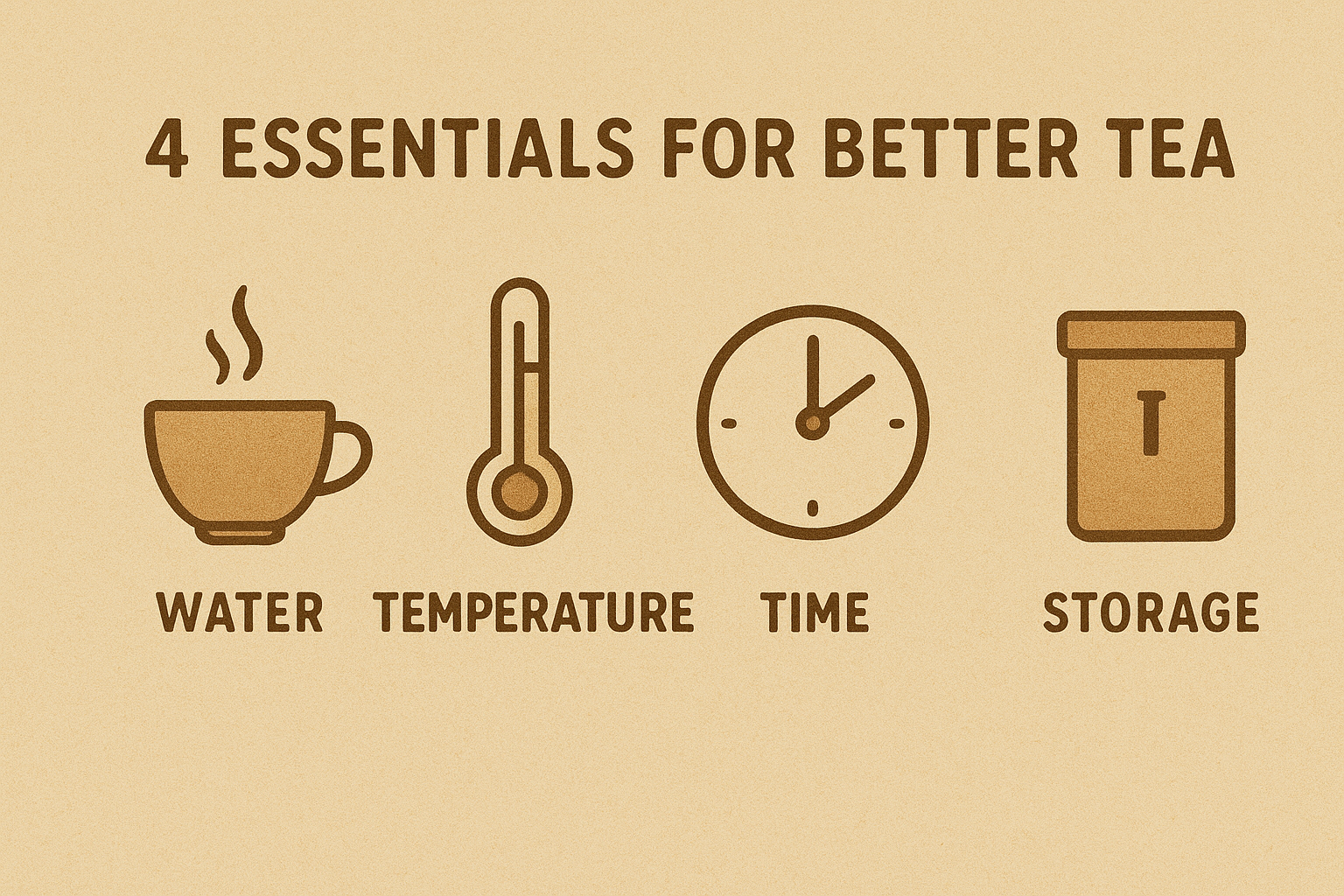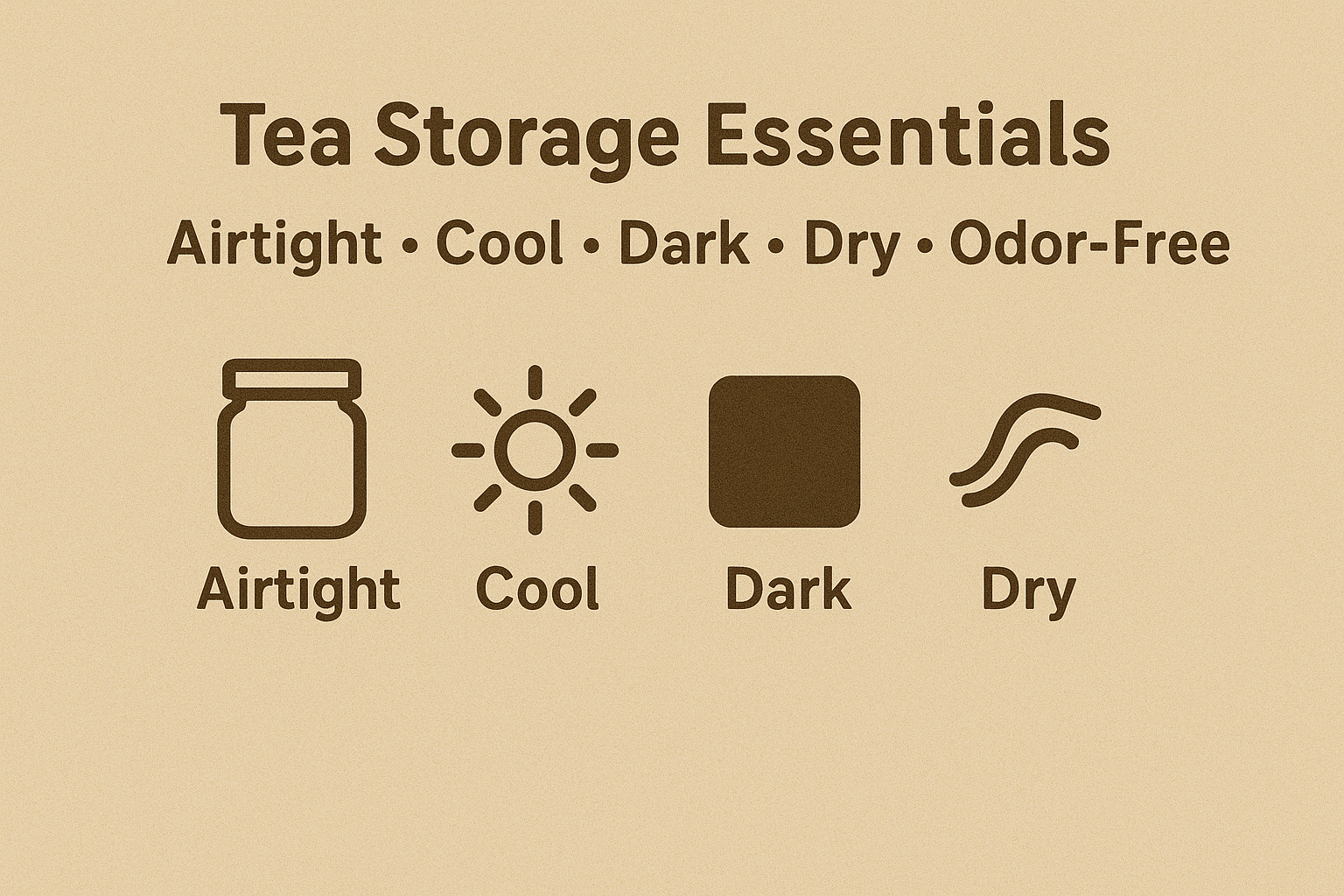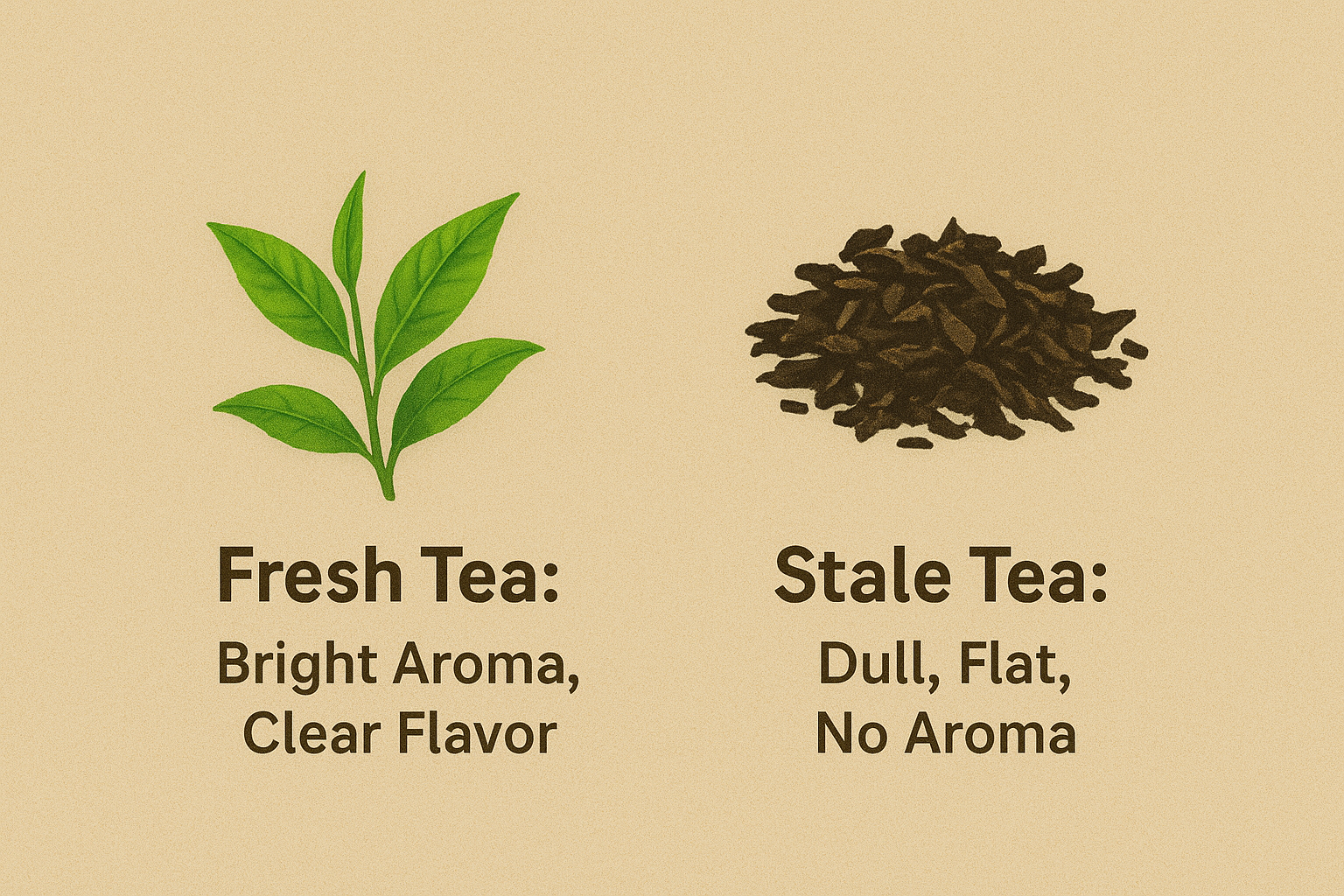
Tea Brewing and Storage Guide – Learn How to Brew and Store Tea for the Best Flavor and Freshness
liujiehangShare
Author: Xu Jiahua, Nationally Certified Senior Tea Appraiser
Brewing tea is both an art and a science. High-quality tea leaves are fundamental, while flavor depends on brewing and storage methods. This guide covers four key factors—water, temperature, time, and storage—to help you brew truly delicious tea.

Why is brewing so important?
Every cup of tea is an extraction—the process of releasing the aroma, color, and flavor of the tea leaves. Temperature, time, and water quality together determine how these elements combine. If the water temperature
is too high, the tea will become bitter; if the time is too short, the tea will be bland and tasteless. A good brewing method lies in finding a balance between flavor intensity and smoothness.
The core principles of brewing high-quality tea
Ideal temperature for brewing tea
Here is a simple temperature guide to help you brew each type of tea in the best way:
|
Tea |
Ideal temperature |
Taste results |
|
green tea |
70–80°C (160–175°F) |
Light, floral, and gentle |
|
Oolong tea |
85–90°C (185–195°F) |
Full and complex |
|
black tea |
90–100°C (195–212°F) |
Rich malt aroma |
|
White tea |
75–85°C (167–185°F) |
Soft and sweet |
|
Pu-erh tea/black tea |
95–100°C (203–212°F) |
The scent of earth, deep and profound. |
Temperature is key to releasing the natural aroma of tea. Each type of tea has its specific optimal temperature range.
For more information, please see our "Guide to the Best Temperatures for Brewing Tea".
How long should tea be steeped?
The steeping time determines the body and taste of the wine.
- Green tea: 1-2 minutes
- Oolong tea: 2-3 minutes
- Black tea: 3-5 minutes
- Black tea/Pu-erh tea: 3-5 minutes (loose tea)
- White tea: 4-5 minutes
- Scented tea: 3-4 minutes
Brewing is a delicate process that affects the extraction of aroma and caffeine. Taste as you brew—stop before bitterness develops.
Water quality and mineral content
When brewing loose-leaf tea, water quality significantly affects the taste. Soft water, such as purified water or spring water, is recommended. Hard water, rich in calcium or magnesium, will weaken the aroma of the tea and result in a bland taste.
Tea to water ratio
Controlling the ratio of tea leaves to water helps prevent the tea from being too strong or too weak. Generally, the ratio is 1:20—that is, about 5 grams of tea leaves per 100 milliliters of water.
Adjust the amount slightly depending on the type of tea: use less for loose tea and more for rolled tea. Beginners can start with 5 grams and then adjust according to their taste.
For more examples of proportions, please refer to our guide: " How much tea should be used in a cup of loose tea?"
Brewing methods that alter flavor
Teapot and glass
Brewing with a teapot allows the tea to maintain its temperature for a longer time, making it suitable for large-leaf teas such as oolong or black tea.
Brewing in a glass allows you to see the tea leaves unfurl, making it ideal for brewing green or white tea.
Traditional Kung Fu tea brewing emphasizes the choice of utensils—using a small ceramic teapot to balance temperature and aroma. For more information, please read * How to Use a Teapot—The Ultimate Guide*.
Iced Tea Expert's Notes
If you prefer cold drinks, you can make iced tea using the same brewing method. First, brew the tea leaves as usual, let it cool, then add ice cubes or refrigerate. For more professional tips, please read "How to Make Iced Tea at Home".
Why are fresh tea leaves so important?
Fresh tea gives more aroma, sweetness, and clarity.
As tea loses freshness, volatile compounds break down and the flavor becomes flat.
Before discussing storage, it helps to understand why freshness affects your daily brew.
How Freshness Affects Flavor
Fresh leaves contain stable polyphenols and aromatic oils.
The fragrance is vivid and the taste feels clean.
Once these compounds fade, even perfect brewing will not bring back the original character.
Signs Your Tea Needs Replacing
- Weak aroma even before brewing
- Dusty or stale smell
- Dull color in the cup
- Cloudy liquor or lack of clarity
If these signs appear, it is time to refresh your supply.
Tea Freshness and Shelf Life
Does Tea Expire?
Tea does not “spoil” like fresh food, but it does lose quality.
Research from the National Institutes of Health shows that temperature and humidity speed up aroma loss and catechin degradation, especially in green tea.
Learn more in our article Does Tea Expire?.
Tea Oxidation and Aroma Loss
When stored improperly, volatile aromatic oils evaporate. The result is a dull, lifeless brew with no depth.
How to Tell Stale Tea
Old tea loses its brightness and may smell dusty or flat. Brew a small sample — if the liquor appears cloudy or has no aroma, it’s time to refresh your supply.
How to Store Loose Leaf Tea
If you’re new to storage, start with our complete guide on How to Store Loose Leaf Tea.

Best Container Materials
Use airtight, opaque tins or ceramic jars. Transparent glass looks beautiful but allows light damage. Stainless steel and purple clay jars are excellent long-term options.
No Sunlight and No Humidity
Store tea in a cool, dark, and dry place — never near windows or stoves. Moisture causes clumping and mold growth.
Keep Tea Away from Strong Odors
Tea absorbs nearby scents easily. Keep it away from spices, coffee, or perfume to maintain its natural character.
highlights, keeping dry products sealed and protected from moisture is key to safe, long-term storage.
Long-Term Storage and Aroma Retention
Some teas improve with age — like Pu-erh and dark oolong — while others fade. Knowing which to age helps preserve quality.

Which Teas are Suitable for Aging
Compressed or fermented teas such as Pu-erh and Liu Bao develop deeper flavor through slow oxidation. Proper storage encourages this evolution.
Which Teas Should be Consumed Fresh
Green, white, and floral teas are best enjoyed within six to twelve months of purchase. Their aroma compounds are delicate and decrease quickly.
FAQ
How long can brewed tea last?
Refrigerated brewed tea lasts about 24 hours. After that, oxidation and microbial growth reduce quality.
Does adding milk change how I should brew tea?
Yes. Brew black tea slightly stronger when adding milk — the fat softens tannins and balances strength.
Can I reuse tea leaves?
High-quality loose-leaf tea can be brewed multiple times. Each brewing time should be gradually shortened to maintain the balance of the tea liquor.
Should tea be stored in the refrigerator?
Generally speaking, no. Refrigeration will introduce moisture and odors. Only green tea, if stored for a long time, might benefit from being sealed.
Which type of container is best suited for storing loose tea?
Sealed tin cans or ceramic jars offer the best preservation results by protecting the food from light and moisture.
Explore Duofu Tea – Premium Loose Tea Suitable for All Brewing Methods
Delicious flavors come from premium tea leaves. Explore the Duofu loose tea range.
We select authentic Chinese teas from the high-altitude regions of China. Each batch of tea is carefully selected to help you brew easily and store properly, keeping the tea fresh for longer.









